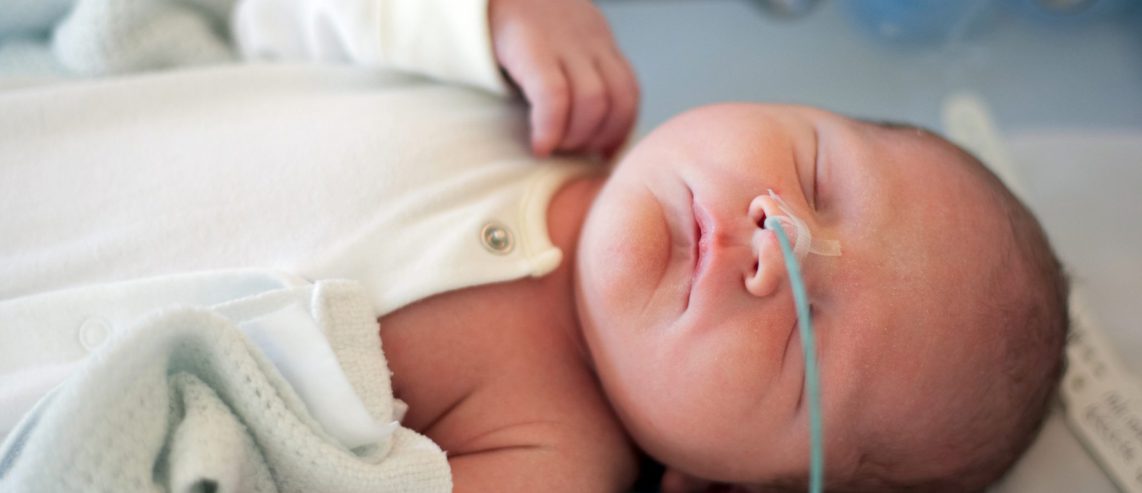Your doctor might suggest a feeding tube if your child has a medical condition that prevents them from eating or drinking enough. It can sound concerning, and it’s a big decision. But using a feeding tube is easier than you might think, and it can have many benefits for your child.
Learn why some children need feeding tubes, how they work, and what you should know about using a feeding tube to feed your child.
Why Do Some Children Need Feeding Tubes?
A feeding tube is a way of getting more food, fluid, or medicine into your child when they struggle to eat by mouth. Feeding tubes are not always permanent. Feeding tubes are a resource to improve your child’s overall health and well-being. If you’re a parent or caregiver, you should never feel like you have failed at feeding your child if they need to use a feeding tube.
Your doctor might recommend a feeding tube for these and other reasons:
- There are abnormalities or problems with how any part of their digestive tract works. This can include their mouth, esophagus (the tube that connects the mouth and stomach or “food pipe” ), stomach, or intestines.
- Your child has sucking or swallowing problems. These are common in premature babies, those with developmental delays, or children with neuromuscular disorders like cerebral palsy.
- Your child has a diagnosis of failure to thrive or poor growth. This means your child isn’t eating enough to support normal growth and development.
- Your child has problems taking medications by mouth. Some children can’t tolerate the taste, texture, or amount of medicine needed.
Never Miss a Beat!
Subscribe to Our HealthBeat Newsletter!
Thank you for subscribing!
You can now select the specific newsletters you'd like to receive.
You are already subscribed.
Subscribe to more newsletters in our email preference center.
Sorry, an error occurred. Please try again later.
Get Healthy Tips Sent to Your Phone!
Tube Feeding Benefits
A feeding tube can provide all of your child’s nutrition or just part of it. Many babies can still breastfeed, and older children can eat solid food with a feeding tube. Regardless, having a feeding tube in place can have tremendous benefits for your child — and for caregivers.
- A feeding tube ensures your child gets the nutrition, fluid, and medicine they need.
- Your child will have improved health, growth, and development with better nutrition.
- They may get more sleep because they won’t wake up during the night for a feeding.
- It can relieve the feeding struggle, stress, and pressure for parents or caregivers. It can also relieve anxiety about whether your child is getting enough nutrition.
Types of Feeding Tubes
Feeding tubes are thin, flexible tubes that carry formula, water, or medicine directly into the stomach bypassing the mouth and esophagus. There are different types of feeding tubes. Your doctor will decide on the best type for your child.
Nasogastric feeding tubes
A nasogastric tube (NG-tube) goes through the nose, down the throat, and into the stomach. It is usually used for a short time — a few days or months.
A trained health care provider can place an NG-tube at your child’s bedside. They’ll lubricate the tip, slide it into your child’s nose and down into the stomach, and check to ensure it’s positioned correctly. Then, they’ll tape the tube to your child’s cheek to hold it in place.
Nasojejunal feeding tubes
A nasojejunal tube (NJ-tube) goes through the nose, down the throat, past the stomach, and into the intestines (the jejunum is part of the intestines). Similar to an NG tube, an NJ tube is usually temporary. An NJ tube is often placed in a patient who has a lot of vomiting or cannot be fed in the stomach.
An NJ tube is usually placed with the help of the radiology or fluoroscopy department to make sure it is placed far enough in the intestines that it won’t fall back into the stomach.
Bridle
A bridle is a device that secures the NG- or NJ-tube in the nose and may be used to secure the tube if it is needed for a longer time, if a child is very active, or if they have an NJ- tube. The goal of the bridle is to prevent it from accidental removal and to minimize replacement.
Gastrostomy feeding tubes
A gastrostomy tube (G-tube) is more common for longer-term tube feeding. It goes through the wall of the abdomen directly into the stomach. Usually, G-tube placement requires a minimally invasive surgery that takes less than 45 minutes.
To place a feeding tube laparoscopically, a surgeon makes two tiny cuts in the skin to access the stomach. They’ll insert a thin tube with a camera (called a laparoscope) in one opening and the G-tube in the other. The laparoscope helps the surgeon see the feeding tube so they can position it correctly.
The doctor might also position the feeding tube in the stomach using an endoscope. This camera device goes down your child’s throat and into the stomach. The endoscope helps the surgeon guide the feeding tube in place.
In some cases, your child might have open surgery, with a larger incision, to place a feeding tube. This might happen if they need another surgery at the same time or if there is scar tissue preventing tube placement.
Gastrojejunal feeding tubes
A gastrojejunal (GJ-tube) is placed via surgery similar to a G-tube. A G-tube can also be converted to a GJ-tube by a radiologist. A GJ-tube has two ports, one that goes into the stomach (often used for medicines or for venting air) and one that has a longer extension that goes into the intestines for feeding.
How Do Feeding Tubes Work?
There are different types of tube feeding systems and setups.
Some use a syringe to add formula to the tube. With others, the formula is in a bag attached to a pole. The formula drips into the tube on its own or with a pump.
Your dietitian will review how the system works and teach you:
- What type of formula to use.
- How to add the formula and get it into your child’s feeding tube.
- How much formula to add at each feeding.
- How often to feed your child.
Feeding Tube Care for Your Child
Feeding your child through a tube can initially feel overwhelming, but the process is easy once you learn it. Proper care and cleaning will ensure success. These tips can help:
- Always wash your hands before handling the formula or parts of the feeding tube.
- Carefully follow the instructions about the type of formula to use, how much to feed, and how often to feed. Some children need a special formula for certain health conditions. Providing too little prevents your child from getting the nutrients they need, and feeding too much is dangerous and can cause vomiting and changes in stooling.
- Flush the tube with water before and after each feeding or giving medicines to prevent blockages. If the tube seems blocked, call your health care provider for guidance.
- Watch for complications, like a tube that’s become dislodged or signs of infection. These can include redness, swelling, or discharge around the tube insertion site. Call your doctor’s office if you notice any symptoms or have questions or concerns.
- You should also stop feeding and call your health care provider if your child has nausea, vomiting, or diarrhea. These can happen if they aren’t tolerating the formula or if the tube is out of position.
- For G- and GJ-tubes:
- Keep the
area where the tube enters your child’s stomach clean and dry to prevent
an infection. Use only soap and water unless your health care provider
recommends something else. - Disconnect the tubing when not in use so the tubing
does not get wrapped around your child or pull on the surgical site which
can cause leaking and scar tissue. - For NG- and NJ-tubes:
-
- Secure the tube to their skin with medical tape.
This step is essential for an infant to ensure the tube doesn’t
accidentally get wrapped around their neck. It also helps prevent the
tube from accidentally coming out.
- Secure the tube to their skin with medical tape.
- Keep the
Learning that your child needs a feeding tube can feel overwhelming. But it’s an important way to keep them nourished and healthy.
Your health care team is here to educate and support you every step of the way. Your child’s health is their priority.
Editor's Note: This article was originally published on , and was last reviewed on .
Sources
About UPMC
Headquartered in Pittsburgh, UPMC is a world-renowned health care provider and insurer. We operate 40 hospitals and 800 doctors’ offices and outpatient centers, with locations throughout Pennsylvania, Maryland, New York, West Virginia, and internationally. We employ 4,900 physicians, and we are leaders in clinical care, groundbreaking research, and treatment breakthroughs. U.S. News & World Report consistently ranks UPMC Presbyterian Shadyside as one of the nation’s best hospitals in many specialties and ranks UPMC Children’s Hospital of Pittsburgh on its Honor Roll of America’s Best Children’s Hospitals. We are dedicated to providing Life Changing Medicine to our communities.

